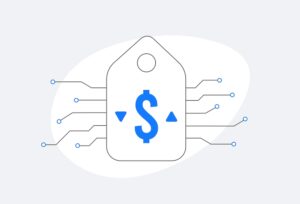 Tremendous technology advancements and access to volumes of marketing data enable companies to communicate and connect with their prospects and customers in ways only imagined 20 years ago. And technology investments reflect the excitement—sometimes too much.
Tremendous technology advancements and access to volumes of marketing data enable companies to communicate and connect with their prospects and customers in ways only imagined 20 years ago. And technology investments reflect the excitement—sometimes too much.
The promise of big data leads many marketers to spend an enormous amount of money on technology. Many brands and agencies lose sight of the reason they are leveraging big data in the first place and that is to drive more sales. An arms race ensues and suddenly infrastructure costs soar and ROI shrinks.
Too many marketers have been to conferences that evangelize the real-time, data-driven 360 degree view of their customers and prospects. The holy grail of understanding everything about your customer in real time sounds very compelling. But for most brands, this dream will never pay off.
We’ve seen this play out multiple times. An RFP is received with ambitious objectives such as integrating multiple channels for communication, gaining the ability to communicate in real time and realizing a full and complete view of the customer’s relationship with the brand across all touchpoints.
But there’s a catch. The price to build this environment is enormous. Building a database marketing environment can stretch into the millions and the cost to maintain the infrastructure can exceed the build price. Unless you are a Fortune 100 company and have an enormous budget, the investment is simply not worth it. You can spend millions of dollars on infrastructure and technology without executing one campaign.
Many companies shelve the project. It’s simply too complex, too expensive and takes too long. Once campaigns are finally deployed, any ROI created by the smart use of data evaporates when faced by infrastructure costs.
There is no doubt that data-driven marketing works. The power of customer data combined with third-party data drives smarter targeting and allows marketers to selectively target their highest value prospects. The key is to leverage data efficiently without over-investing in technology.
Start by stepping back and determining a single objective that would be solved by the better use of data. Increasing the effectiveness of a single channel such as direct mail is often a great place to start. Then turn the objective into a question, such as “What if through smarter targeting I could decrease my direct mail costs and increase my ROI?” Now apply data to solve for your answer.
There are firms in the marketplace that can quickly combine customer data with relevant third party data to rapidly achieve unique acquisition models. The models are based on the profile of the current customer base and their behaviors. While in the grand scheme of customer modeling this is a relatively straightforward exercise, in many cases this type of modeling results in massive gains.
Once an initial model is constructed and tested against the single objective it becomes easier to continue to invest more dollars into data-driven campaigns. The key is to avoid any process that requires a massive upfront investment just to begin to prove the effectiveness of using data. The ROI must appear in the initial campaign results, not tied to the promise that once there is a large infrastructure in place, the ROI will follow.
Technology has evolved to make this solution a reality now. As marketers are realizing, there is simply no reason to let infrastructure costs block the way to building sales with a data-driven strategy. The smarter move is to tackle your specific challenges head-on and let your success guide your technology investment.
Ross Shelleman is CEO of Target Data.




 Network
Network

